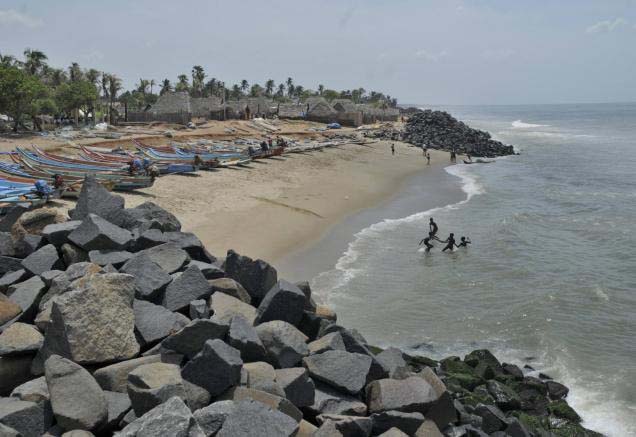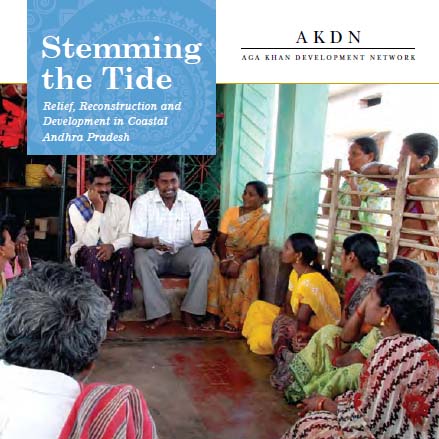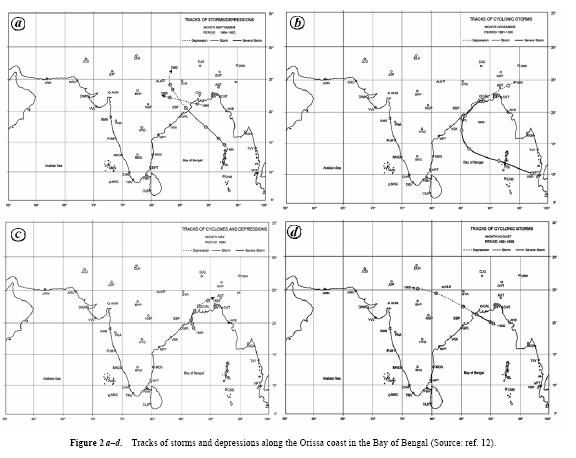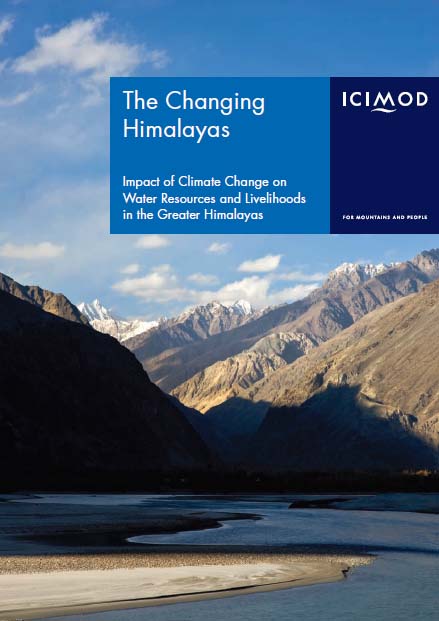Rainfall and other forms of Precipitation
Sea level rise – Impact on major infrastructure, ecosystems and land along the Tamil Nadu coast – A report by IFMR and IIT Madras
Posted on 24 Aug, 2011 03:53 PM This report by Institute of Financial Management and Research (Madras) and Indian Institute of Technology (Madras) deals with the impact of sea level rise on major infrastructure, ecosystems and land along the Tamil Nadu coast.
This report by Institute of Financial Management and Research (Madras) and Indian Institute of Technology (Madras) deals with the impact of sea level rise on major infrastructure, ecosystems and land along the Tamil Nadu coast.
The Tamil Nadu coastline is about 1,076 km, with thirteen coastal districts, and it forms a fairly large contiguous and narrow coastal strip dotted with fragile ecological features and rampant development activities. There are major, existing and proposed, economic and infrastructure developments, including ports, power plants, highways and even airports, which are being planned very close to the shoreline along India’s coast.
Hydrology of the Upper Ganga river – A report by the International Water Management Institute
Posted on 21 Aug, 2011 10:43 PMTo provide the background hydrological information for the assessment of environmental flow requirements at four selected ‘Environmental Flow’ sites, a hydrological model was set up to simulate the catchment in the present state (with water regulation infrastructure) and to generate the natural flows (without water regulation infrastructure).
Suppressed surface heating over north-western parts of the country and the ensuing monsoon rainfall - A report by India Meteorological Department
Posted on 08 Aug, 2011 07:38 AMDuring the year 2011, the temperatures have been below normal over north and northwestern parts of India due to the enhanced activity of western disturbances. These conditions had raised many apprehensions about the possible impact on the subsequent monsoon, if any.
Uncertainties in downscaled relative humidity for a semi-arid region in India – A paper in Journal of Earth Systems Science
Posted on 05 Aug, 2011 05:42 PMThis paper in Journal of Earth Systems Science deals with uncertainties in downscaled relative humidity for a semi-arid region - Malaprabha basin in India. Researchers and decision-makers who assess the impact of climate change in river basin development, agriculture, hydrology, irrigation management, etc., require future scenarios of relative humidity.
Stemming the tide - Relief, reconstruction and development in coastal Andhra Pradesh – A report by Aga Khan Development Network
Posted on 05 Aug, 2011 02:35 PM Its aim aim was to improve the capacity of target communities to better manage in times of disaster. To set in motion a process that would sustain a short-term project, the Aga Khan Development Network drew on guiding principles developed from its experiences of projects in disaster reconstruction and more comprehensive development programs: high-quality community-based interventions, working on multiple fronts, and fostering linkages with strong institutional partners.
Its aim aim was to improve the capacity of target communities to better manage in times of disaster. To set in motion a process that would sustain a short-term project, the Aga Khan Development Network drew on guiding principles developed from its experiences of projects in disaster reconstruction and more comprehensive development programs: high-quality community-based interventions, working on multiple fronts, and fostering linkages with strong institutional partners.
At the core of the project’s disaster management and mitigation strategy was the creation of empowered and highly motivated community-based organizations; their participation was critical in shaping and implementing initiatives that would best serve the needs of the vulnerable, particularly women and children.
Role of cyclones and other factors in the decline of the ports of northern Orissa - Current Science
Posted on 30 Jul, 2011 01:23 AM This article published in Current Scienc
This article published in Current Scienc
The changing Himalayas - Impact of climate change on water resources and livelihoods in the Greater Himalayas – A report by ICIMOD
Posted on 27 Jul, 2011 09:56 PM The greater Himalayan region “the roof of the world” – contains the most extensive and rugged high altitude areas on Earth, and the largest areas covered by glaciers and permafrost outside the polar regions.
The greater Himalayan region “the roof of the world” – contains the most extensive and rugged high altitude areas on Earth, and the largest areas covered by glaciers and permafrost outside the polar regions.
The sector programme and climate change initiatives in Uttarakhand
Posted on 27 Jul, 2011 02:54 PMRecent scientific studies show that global warming is already causing environmental changes that will have significant global economic and social impacts. As the world's 4th largest emitter of greenhouse gases, India has to juggle the imperative demand for economic development with pressures for greater efficiency in the use of energy.
Climate change is a change in the statistical properties of the climate system when considered over long periods of time, regardless of cause. Climate change reflects a change in the energy balance of the climate system, i.e. changes the relative balance between incoming solar radiation and outgoing infrared radiation from Earth. The threat emanates from accumulated green house gas emissions in the atmosphere, generated through long term and intensive industrial growth and high consumption life styles of developed countries.
Threat of land subsidence in and around Kolkata City and East Kolkata Wetlands – A paper in Journal of Earth System Science
Posted on 18 Jul, 2011 07:33 PMThis paper in Journal of Earth System Science attempts to estimate the possible rate of land subsidence of Kolkata City including Salt Lake City and the adjoining East Kolkata Wetlands located at the lower part of the deltaic alluvial plain of South Bengal basin. Land subsidence is an environmental hazard which is caused by overdraft of groundwater or oil extraction and results in gradual settling or sudden sinking of the earth’s surface owing to subsurface movement of the materials of the earth.
Impact of climate change on extreme rainfall events and flood risk in India – A paper in Journal of Earth System Science
Posted on 18 Jul, 2011 06:27 AMThe occurrence of exceptionally heavy rainfall events and associated flash floods in many areas during recent years prompted the researchers to study long-term changes in extreme rainfall over India.





